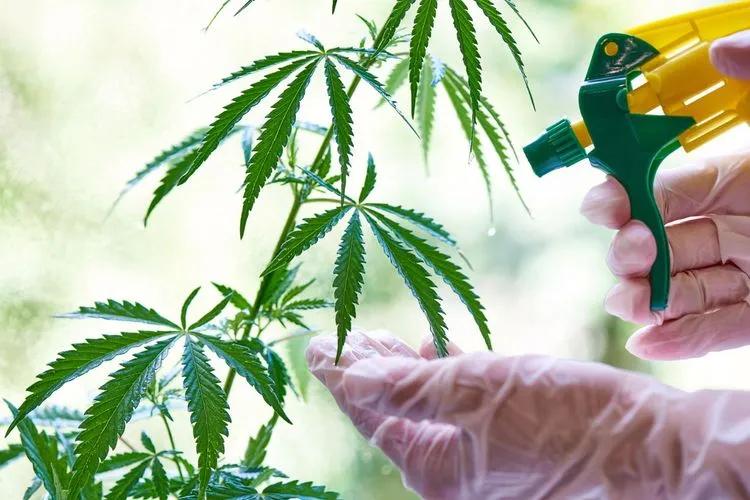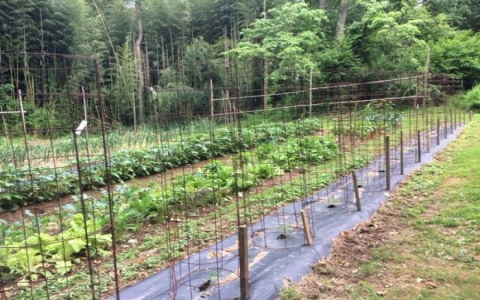Alright, let’s get into it. When I first started growing, pests felt like this giant, unbeatable monster. I’d see one tiny bug and just panic. My first thought was, “Okay, what’s the strongest thing I can spray on these plants to kill everything?” That was my initial mindset, just nuke ’em all.
My Early Spraying Days
So, I went online, searched around, and everyone was talking about neem oil. “It’s natural, it’s great,” they said. So, I bought some. First thing I noticed? The smell. Wow, that stuff is pungent. I mixed it up, sprayed my plants down. Did it work? Well, sort of. For some little guys, maybe. But when I got a real spider mite problem later on, neem oil felt like I was just giving them a spa day. They didn’t seem to care much.

I remember trying some homemade concoctions too. Garlic spray, pepper spray – my grow tent smelled like a weird kitchen experiment. Some of those things might have deterred a few casual visitors, but the determined pests? Nah, they just laughed it off, probably.
Then I tried some general “garden insect killer” from the local store.
I was getting desperate with some stubborn aphids. I sprayed that stuff, and yeah, it killed the aphids. But I also noticed my leaves looking a bit stressed afterwards. And I started worrying, “What am I actually putting on these plants that I’m gonna use later?” That thought stuck with me.
Figuring Out What Actually Works (For Me)
It took me a while, and a few frustrating battles, to realize there isn’t one “best” pesticide. It’s more like you need a toolkit, and you need to know what tool to use for which job. It’s kinda like how some companies use a whole bunch of different tools to get their big projects done; no single one does it all.
- For Spider Mites: These guys are the worst. After neem oil failed me in a bad infestation, I had to step it up. I found insecticidal soaps, used properly and repeatedly, did a much better job. I had to be super diligent, spraying the undersides of all the leaves. Sometimes, if it was really bad on just one or two plants early on, I’d even consider just getting rid of that plant to save the rest. Sounds harsh, but spider mites spread like wildfire.
- For Fungus Gnats: These little flying annoyances are usually a sign of overwatering. So, the first thing I did was let my soil dry out more between waterings. That helped a ton. Then, I got those yellow sticky traps. Man, those things are effective. Not a spray, but part of my pest control now.
- For Aphids: Insecticidal soap again. Or even just a strong jet of water if the infestation is small and the plants are sturdy enough. I’ve also heard good things about releasing ladybugs, but I haven’t gone that route myself yet.
- For Powdery Mildew (Not a pest, but a common spray issue): This white fuzzy stuff is a fungus. I’ve tried milk solutions, potassium bicarbonate solutions. Good airflow and lower humidity are key for prevention here, way more than any spray. If I catch it super early, I can sometimes just wipe it off carefully.
My “System” Now
So, my approach totally changed. I stopped looking for that one silver bullet spray.
First, prevention is huge. Keeping my grow area clean is a big one. Checking new plants really carefully before they come anywhere near my main ones. Making sure there’s good air movement.
Second, identify the enemy! I actually spend time looking at the bugs with a little magnifying glass now. Knowing what I’m dealing with makes a massive difference in choosing how to fight it.

Third, I try the least aggressive stuff first. Like those sticky traps, or physically removing pests if I can. Then maybe an insecticidal soap. I save the stronger, more specific pesticides (and I’m super careful about what I choose, especially if plants are flowering) as a last resort.
And honestly, sometimes if a plant is too far gone, or it’s just one problematic one, I’ve learned to cut my losses. It’s painful, but better than risking my whole crop or using something I’m uncomfortable with.
It’s been a journey of trial and error, a lot of reading, and just paying close attention to my plants. There’s no single “best,” but there’s definitely a “better way” for your specific situation, and that usually involves a few different strategies, not just one bottle.




















